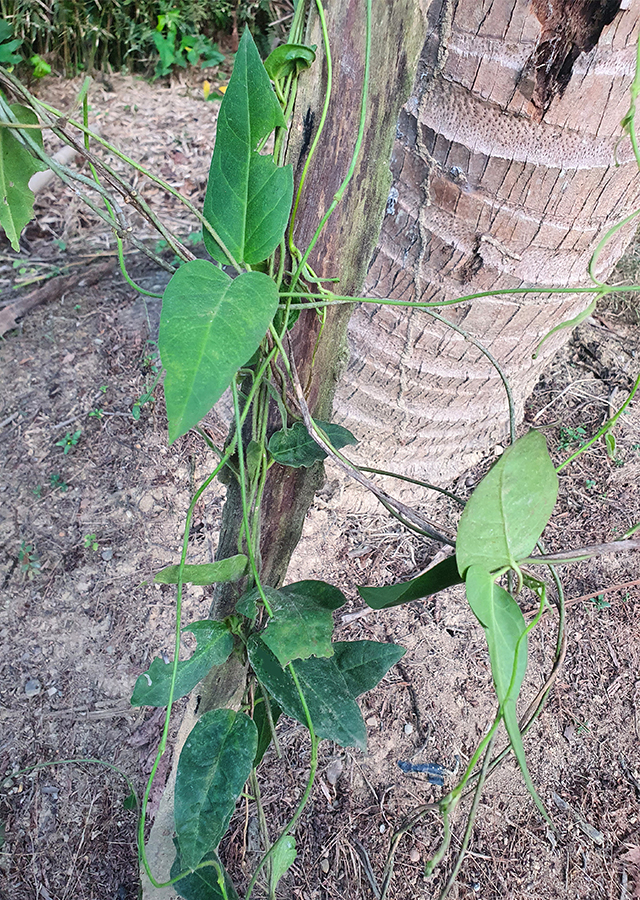Traditional Herbs from Vincetoxicum indicum
cough
- Take enough Indian ipecac root, wash it thoroughly.
- Boil it until it boils.
- Let it warm/cold.
- Strain then drink.
What is Vincetoxicum indicum Looks like??



Parts of Vincetoxicum indicum that could be used
- Leaves
- Roots
- All Parts of the Plant
Vincetoxicum indicum Distribution
Indian ipecac is an endangered plant from the Apocynaceae family, widespread in Africa, Asia (from India and East Sri Lanka to Southeast Asia), Australia and the Oceanic Islands. This species is used by local communities as a source of fiber and medicine. Used extensively and led to overexploitation, causing this plant to face the threat of extinction in the Southeast Asian subcontinent. As a source of fiber, the stem produces fine and strong fiber. Meanwhile, based on its function as a medicinal plant, Indian ipecac has long been widely used in Ayurveda and Siddha. This species has also been included as an official medicine in the Bengal Pharmacopoeia in 1884.Agroecology of Vincetoxicum indicum
Indian ipecac can generally be found growing along the coast in sandy soil, especially on stable sand dunes and in sandy coconut plantations, from sea level to a height of 900 m above sea level. Also distributed in flat areas, hilly slopes, moist forests, and narrow valleys in Asia, Africa, Australia, Oceanic Islands, Ceylon, Malaysian Islands, and Kalimantan. Indian ipecac can also grow well in areas where annual rainfall is around 1,000-1,500 mm at an altitude range of 900 m above sea level to 1,260 m above sea level in the sub-Himalayan belt and an optimum temperature of 5-25 �C. It grows well in sunny areas in full sun or partial shade and prefers organic-rich, well-drained soil.
Morphology of Vincetoxicum indicum
- The roots are in the form of long, fleshy bearing knots, the cork skin is light brown.
- The stems are many branched, have long hairs, grow climbing and twisting with the help of tendrils, yellowish gummy.
- The leaves are arranged oppositely (opposite), dark green , glossy, leaf blades ovate-oval to elliptical-oval, with narrow tips, heart-shaped or rounded at the base, thin, velvety below when young, smooth above 1.2 cm.
- Small flowers at the end of the hairy stalk in the axils of the leaves are arranged in umbellate cymes. The flowers are bisexual, the corolla is 5-lobed, fused at the base, pointedly oval, hairy and greenish purple or greenish yellow to the base, densely hairy outside. Sepals lance-shaped or narrow triangle, apex sharp 5-8.5 cm, branched, oval-lanceolate, tapering at the apex, and glabrous.
- Seeds are numerous, oval in shape (0.6\u20130.8\u00d7 0.3\u20130.4 cm) , white comma fur.
Cultivation of Vincetoxicum indicum
- Plant propagation through seeds and in vitro propagation techniques.
- Seed germination begins in 10 days and can be transplanted into permanent land after 90 days. Transplantation gives the best results if done in the rainy season.
Vincetoxicum indicum, more details :
Chemical Content of Vincetoxicum indicumAlkaloids (tylophorinine, tylophorine, 6-desmethyltylophorine, tylophorinidine, 5–hydroxy–O–methyltylophorinidine, tyloindicine A, tyloindicine–B, 14–hydroxyisotylocrebrine, 4,6-desdimethylisotylocrebrine, tyloindicine A-J, alkaloids indolizidine septicine, and isotylocrebrine), saponins, tannins, terpenoids, stigmasterol, β-sitosetrol, tetratriacontanol, octaosanyl octacosanoate, quercetin, α– and β–amyrins, phytosterol.
Benefits of Vincetoxicum indicum
Cures asthma, tuberculosis, bronchitis, coughs, colds, inflammation, jaundice, snake bites, gout, diarrhea, dysentery, rheumatism, syphilis, overcomes headaches, reduces fever. Acts as a blood purifier, laxative, stimulant, emetic, diaphoretic. Has activity as antibacterial, antipsoriasis, antimicrobial, antiulcer, anxiolytic, antidiabetic, hepatoprotective, antitumor, antioxidant, anticonvulsant, antirheumatic, antineuroinflammatory, diuretic.
Simplisia of Vincetoxicum indicum
Another Facts for Vincetoxicum indicum :
Synonym of Vincetoxicum indicumCynanchum indicum Burm.f., Tylophora indica (Burm.f.) Merr.
Habitus of Vincetoxicum indicum
Creepers. Vines, twining, annual, stems up to 3 m long, rhizome short, 3-4 mm thick
Habitat of Vincetoxicum indicum
- Forest
- Coast
No comments:
Post a Comment